In March-April of this year, Busybird’s own Kev Howlett trekked up to Mount Everest Base Camp and back, taking photos for a gorgeous full-colour coffee-table book, Walk With Me, as well as an exhibition of the same name, to raise funds for CMTA Australia.
Here’s an interview with Kev, as we prepare for the launch this Saturday …
 Tell us a bit about your background
Tell us a bit about your background
I was always good at art at school and after deciding not to join the Air Force I ended up at Preston College studying Finished Art. After a year, my art teacher said I had a flair for photography and might want to think about changing courses. After a bit of back and forth I decided to swap to photography and I completed the two-year course.
I got a work experience placement at a commercial photo studio at the end of my final year and they liked me so much they offered me a job once I left school. I worked there for a few years as an assistant and when the senior photographer – my mentor – decided to leave and go freelance, he asked me to go with him. We worked together for many years until I started getting my own work and then freelancing myself.
I worked in lots of different studios photographing everything from cars, food, fashion and products through advertising agencies. I then worked for an electrical company full-time running their in-house photographic studio, which was great to grow from a primitive analogue studio using old cameras and film to a fully modern digital studio. I ended up setting up one of the first high-end digital studios in Melbourne at the time. I had Kodak and Nikon reps visiting me regularly to calibrate their new cameras and software as we were all in a development stage of the digital revolution.
Seven and a half years there I then started doing technical illustration for Ford’s Global Catalogue on the side from home after the day’s other work. Blaise and I did this together, and part-time jobs on the side; this is where Busybird grew from.
After many years of that and being so busy we couldn’t handle any more, Ford decided to give all our work to India and South America where monkeys were doing it for peanuts. So there we were with no clients and all this equipment.
Luckily, Blaise and I saw it coming for a while so we had the publishing side slowly forming and as we lost Ford we concentrated on clients who needed books made. I did it part time for a while as did Blaise, although she was working full-time at the library and doing Busybird at night.
About eighteen months ago we spotted this building for lease while out walking our dog one night and rang the real estate company to have a look inside. It was six months earlier than we had thought about moving the business out of home but we took a risk and here we are today, both employed full-time at Busybird with a busy and bright future and a publishing house. It has been a long journey but now we look back it’s kind of what we were always aiming for and where we always saw Busybird going.
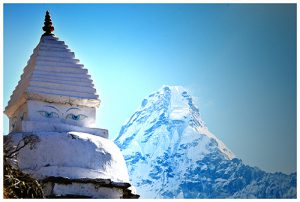 And how about CMT …?
And how about CMT …?
CMT (Charcot-Marie-Tooth disease) is a nerve degenerative disease that our oldest son Dylan has. We had never heard of it until Dylan was diagnosed with it so it has been a learning curve for us as to what it is and the effects it will have on him. We first noticed it when Dylan was in his early teens. He played football for a local club and up to this stage was excelling. He loved it with a passion and I think he thought it might be a career one day.
After noticing he was slowly starting to lose his impact on games, lag behind the others, and fall over a lot more than usual we got him looked at and the normal GP didn’t really have any clues as to the problem. After seeing a podiatrist he first mentioned we should get him checked for CMT so we did. It turns out he has it but as research is very limited, they are not quite sure the type he has because there are new strains being discovered all the time. All we know is that he doesn’t have the most common type, which is very quick-developing and debilitating.
The effects Dylan suffers from are his feet are curling up (hence the falling over) and he was losing sensitivity in his feet and hands. As there is no cure or treatment the only option for him was to have both feet totally reconstructed. This was all as he started his last year of high school VCE so he had to cope with a lot during that year. They operated on one foot with sixteen weeks recovery and then the second so his whole year going to school was interrupted and he was in a wheelchair or on crutches for most of it. He passed his year after missing large chunks, so a great effort on his part.
The reason for my fundraising for CMT was the fact I wanted to spread the word on this and inform others as to its existence. I have loved talking about it and watching people learn and know more about it and what Dylan has had to go through. When I contacted the CMTAA (Charcot Marie Tooth Association Australia) and said I wanted to raise some money for them I remember their humbleness and gratitude toward my offer.
I made a statement that I would love to see a cure or at least some helpful medication developed for Dylan in my lifetime, so hopefully my little trek and efforts are helping that become reality.
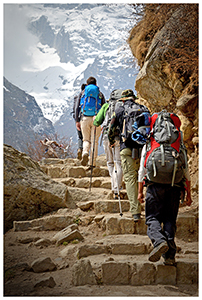 What made you want to climb to Mount Everest Base Camp?
What made you want to climb to Mount Everest Base Camp?
I had heard about Base Camp in the past but hadn’t really looked into it much until a friend of mine approached me and said we should try it. Both of us have kept reasonably fit and thought that as we were approached the big five-oh we should do something a little adventurous. Both of us are photographers and we knew of some other photographers who had done it. We thought it would be a great place to do something hard on our bodies but also an amazing place to photograph.
After doing some research we both decided it was the adventure we were looking for so set about planning it. After meeting more and more people who had done it or knew people who had, we heard so many horror stories of attempts gone wrong and abandoned that secretly I was a little worried if I could get there. There were times on the trek I thought, What the hell are we doing? but we got there and back and lived to tell the tale.
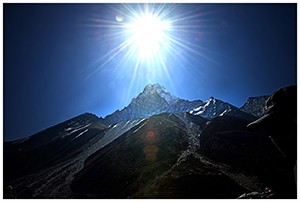 And how did the idea for the book, Walk With Me, come about?
And how did the idea for the book, Walk With Me, come about?
Well, being a photographer I always thought I should do something with my photos rather than store them on my computer and forget them. I think it was after that, that we came up with the idea that we could have a reward for pledges to help make the book a reality, and that we could use the book as a way to raise money for CMT.
The Walk With Me title came to us and felt perfect. I wanted the people who took part in my fundraiser to, in a way, come with me on the trek, walk it and feel a part of the experience.
I tried to capture the Walk With Me theme in my photos so when you look at the photos it’s like you are looking out at what I was seeing and feeling. I also thought since people with CMT like Dylan probably will never be able to try such a long and strenuous trek with their condition, I would bring it to them in the book. I love the title as it sums up so much of what the whole project was about.
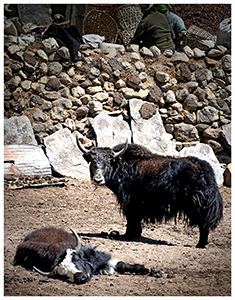 What was it like taking photographs of the trek?
What was it like taking photographs of the trek?
My photographer mate Norman – who I went with – and I agree it was not the photographic trip we had assumed it would be before we left. We thought we would have time to play, set things up and wait for conditions and light to be perfect.
Well, that wasn’t the case at all.
The trek is very demanding physically and with time so we were always on the go. The sherpas would say zoom, zoom after five-minute rests and off we went again. Nearly all the photos we got were on the move, shot as we quickly saw things, which made it a little tough. With limited camera battery charging opportunities we were always worried about draining all of our batteries and losing use of our cameras so we couldn’t even preview our photos to see if we had gotten what we wanted. We were in a sense shooting blind, just relying on our skills and knowledge to correctly expose and frame the scenes.
Most trekking days were planned to start early in the morning and get to camps early afternoon, so Norm and I thought we would then have the afternoons to go off and set up shots and capture sunsets, etc. Well, as it happens, in Nepal the mornings are crisp and clear but by 1.00 pm the clouds form over the mountains and come in to white the whole place out. So there went our plans.
Another thing I tell people is that there really wasn’t a lot to photograph. Now that may sound weird as we are walking through the Himalayas, one of the most stunning places on the planet. The reason I say this is that the place is amazing, the mountain scenes and hilltop villages were stunning but after a week of photographing them we were looking for something else, something different.
Most villages were the same and as we turned around every corner another amazing mountain scene showed itself and, like anything, you get a little blasé after a while. I wanted to photograph the local people and capture their life and culture, but again I was blocked a little. The trail we were on is quite full of tourists all year and the locals I guess are a little over having cameras pointed at them. Most times you try to photograph them they yell at you or ask for money, children would yell no at you and run away. Although I got some lovely people photos overall it was like pulling teeth and not as easy as expected.
I think I took the right camera and gear and had a good system worked out where my camera was in my hand all the time because things happened fast so you had to be ready. Walking over steep rocky ground meant most of the time you were focused on the feet of the person in front of you so you picked your walking line and didn’t slip. It was a real effort to look up, see what was around you and appreciate it. It was quite annoying to just see the backs of people in front of you all day but that is the nature of trekking. Stopping, even looking back to where you had just come from now and then, was the way to capture the scenes from different angles.
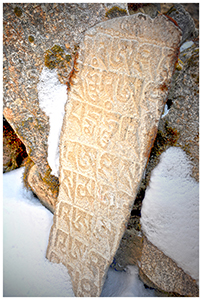 What personal and professional achievements did you get from the climb?
What personal and professional achievements did you get from the climb?
I am a very competitive person so the idea of failing to get to EBC was a scary thought. I had 80 people pledge money and who were riding the trek with me so to come home and say I didn’t quite get there wasn’t an option. I did lose my appetite for a week or so on the way up and I must admit I was running on empty most days. I couldn’t even get plain rice and bread down. Our main sherpa, Roy, was quite concerned with me as he saw me refuse most meals. He wondered how I was still going with the little I had eaten but I did and surprised him and myself.
On a professional level I guess I learnt I have the skills and experience in photography to handle tough conditions and time limits. We were shooting blind and quick and I was adjusting the camera manually in most cases to compensate for light and snow etc. So when I finally got to sit down and check what I had captured, I was pleasantly surprised my instincts had been correct in most cases.
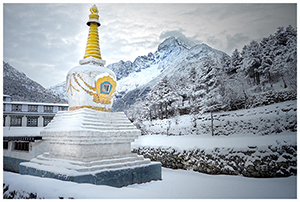 Are you happy with the final product?
Are you happy with the final product?
Yes I am. It has been a long process sorting through over 3000 photos and trimming them down to my best 300 or so. Then sorting into an order and theme. It took quite a few hours of putting all this together and I do love the photos I have used and how they are presented. I am not a very ‘look at me’ kind of guy so I must say I am a little nervous with the attention the book will get once released. I hope it lives up to and exceeds the expectations of all who are waiting for it.
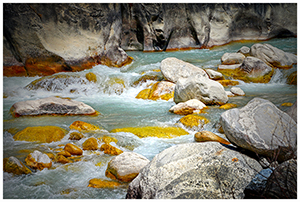 Any words of wisdom for anybody else with a dream?
Any words of wisdom for anybody else with a dream?
All I can say is that the process from dreaming of something and then doing it isn’t that far apart. It just takes a commitment and a desire to do it. I remember thinking that going to Base Camp was a tale I had heard from others, it’s an adventure others take but not someone like me.
I think back now and smile because all the hard work, sweat and pain to get there has been what the dream is all about. I remember thinking about what people had said before I left: ‘It’s not the destination, it’s the journey’.
That’s how the trek was; eleven days to get to a pile of rocks but that’s just the turnaround point – you still have half of the journey left. I think that’s like a dream. You think of something you desire and as good as it is when you finally get it, you find it’s the anticipation, planning, waiting, and excitement that is the thrill of the dream.
That’s the journey.
Kev Howlett.
Walk With Me,, the book and the exhibition, launches 3.00pm, 22nd November (this Saturday!), at the Busybird Studio ~ Gallery. If you’d like to come, please RVSP us by calling or emailing, or by saying yes on our Facebook event.
All the pictures here were taken from the outtakes page of Walk With Me.
